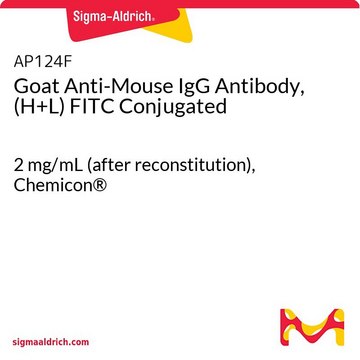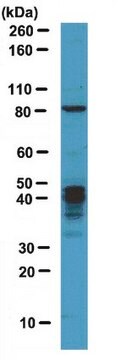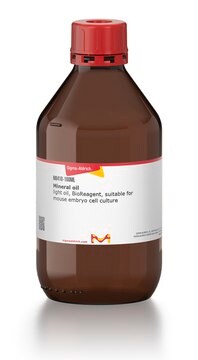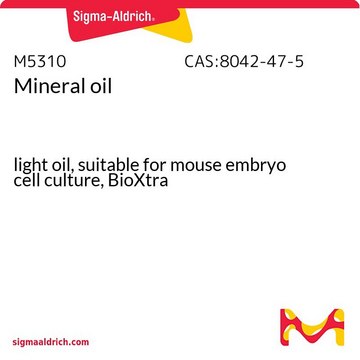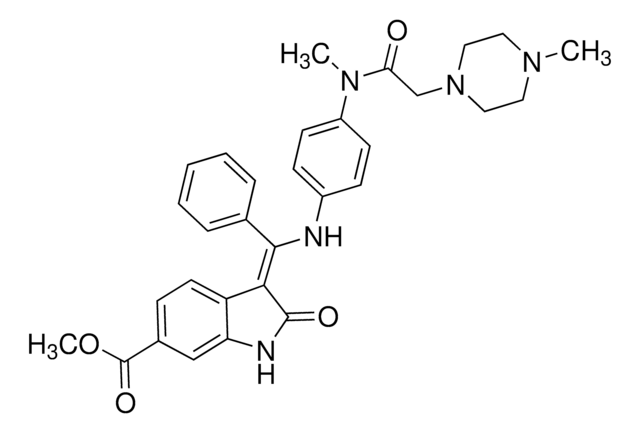MABE70
Anti-MBNL1 Antibody, clone 4A8
clone 4A8, from mouse
Synonim(y):
muscleblind-like (Drosophila), muscleblind (Drosophila)-like, muscleblind-like protein 1, Triplet-expansion RNA-binding protein
About This Item
Polecane produkty
pochodzenie biologiczne
mouse
Poziom jakości
forma przeciwciała
purified immunoglobulin
rodzaj przeciwciała
primary antibodies
klon
4A8, monoclonal
reaktywność gatunkowa
human
metody
immunocytochemistry: suitable
western blot: suitable
izotyp
IgG1κ
numer dostępu NCBI
numer dostępu UniProt
Warunki transportu
wet ice
docelowa modyfikacja potranslacyjna
unmodified
informacje o genach
human ... MBNL1(4154)
Opis ogólny
Immunogen
Zastosowanie
1:4 dilution from a representative lot detected MBNL1 in myotonic dystrophy cells. Data courtesy of Dr. Ian Holt, Wolfson Centre for Inherited Neuromuscular Disease.
Jakość
Western Blot Analysis: 1:10,000 dilution of this antibody detected MBNL1 on 10 µg of HEK293 cell lysate.
Opis wartości docelowych
Postać fizyczna
Nie możesz znaleźć właściwego produktu?
Wypróbuj nasz Narzędzie selektora produktów.
Kod klasy składowania
12 - Non Combustible Liquids
Klasa zagrożenia wodnego (WGK)
WGK 1
Temperatura zapłonu (°F)
Not applicable
Temperatura zapłonu (°C)
Not applicable
Certyfikaty analizy (CoA)
Poszukaj Certyfikaty analizy (CoA), wpisując numer partii/serii produktów. Numery serii i partii można znaleźć na etykiecie produktu po słowach „seria” lub „partia”.
Masz już ten produkt?
Dokumenty związane z niedawno zakupionymi produktami zostały zamieszczone w Bibliotece dokumentów.
Nasz zespół naukowców ma doświadczenie we wszystkich obszarach badań, w tym w naukach przyrodniczych, materiałoznawstwie, syntezie chemicznej, chromatografii, analityce i wielu innych dziedzinach.
Skontaktuj się z zespołem ds. pomocy technicznej

